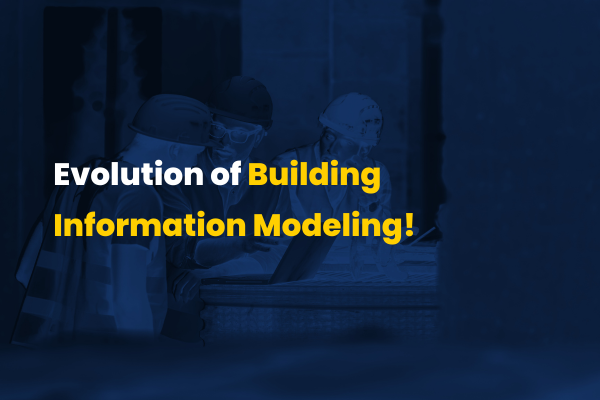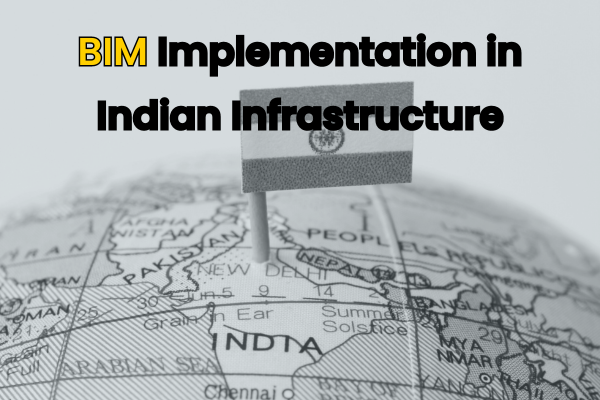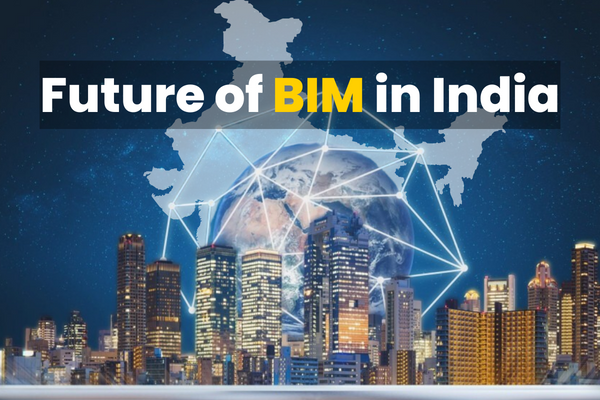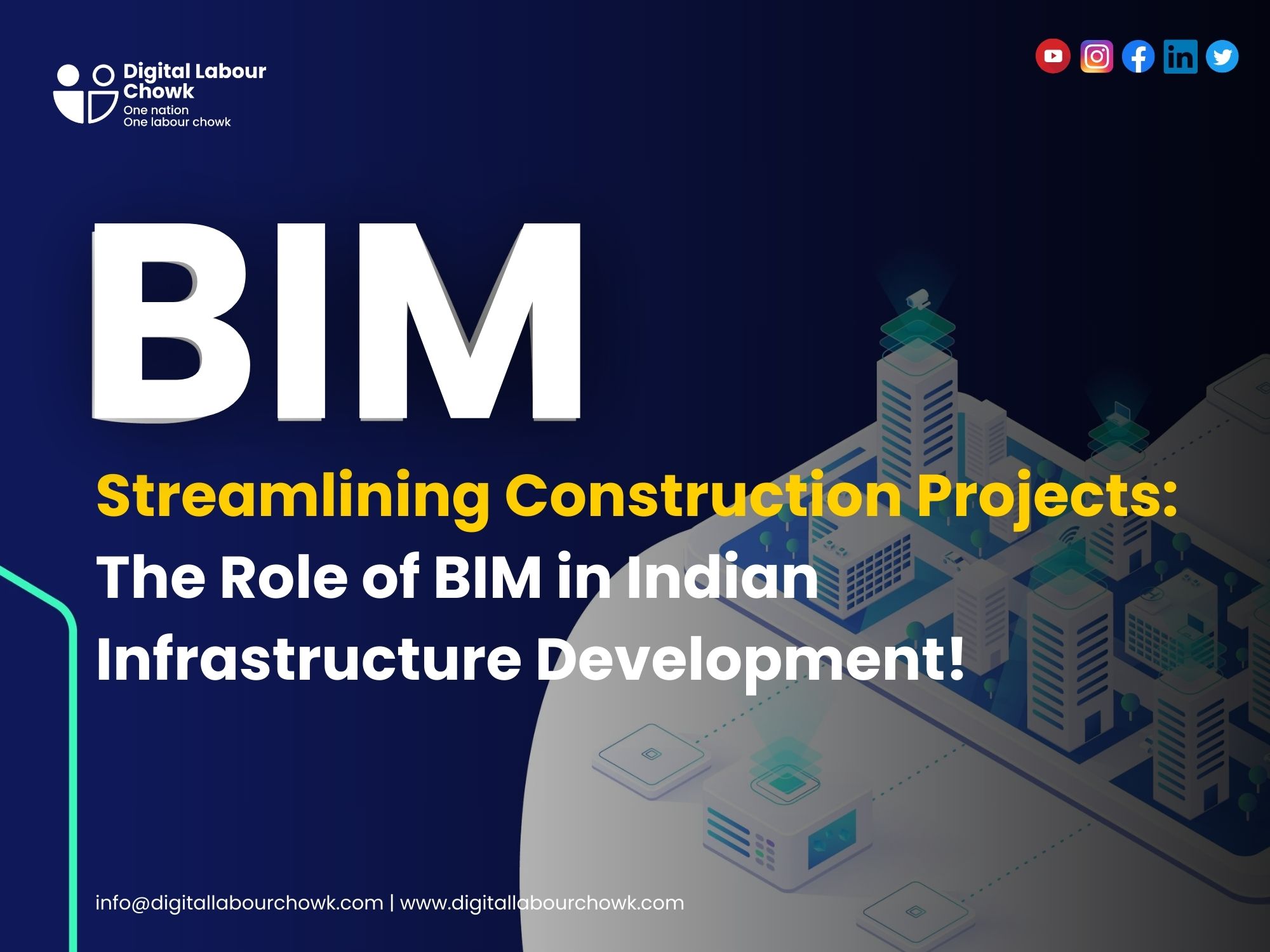Physical Address
Introduction

Building Information Modeling revolutionizes the architecture, engineering, and construction industries by integrating digital technologies into the design, construction, and management of built environments. Unlike traditional 2D drafting methods, Building Information Modeling encompasses a holistic approach that allows stakeholders to collaboratively design, visualize, simulate, and manage buildings and infrastructure projects.
At its core, Building Information Modeling creates a digital representation of physical and functional characteristics of places. This intelligent model serves as a shared knowledge resource for information about a project, forming a reliable basis for decision-making throughout its lifecycle.
By leveraging Building Information Modeling, architects, engineers, and construction professionals can streamline workflows, improve coordination, reduce errors, and enhance project efficiency. BIM facilitates clash detection, enabling early identification and resolution of conflicts among various building systems, thus minimizing rework and cost overruns. Furthermore, BIM facilitates better communication and collaboration among project team members, leading to improved project outcomes.
Beyond construction, Building Information Modeling supports facility management by providing accurate and up-to-date information about building components, systems, and spatial relationships. This enables owners and facility managers to optimize building performance, maintenance, and operations throughout its lifespan.
In essence, the introduction of Building Information Modeling marks a paradigm shift in the AEC industry, fostering innovation, efficiency, and sustainability in the design, construction, and management of the built environment.
Defining Building Information Modeling
Building Information Modeling is a digital process that enables architects, engineers, and construction professionals to collaboratively design, visualize, simulate, and manage buildings and infrastructure projects. It involves creating a 3D model that encompasses both physical and functional characteristics of the structure. This model serves as a shared knowledge resource throughout the project lifecycle, facilitating better decision-making and coordination among stakeholders. Building Information Modeling enhances efficiency by enabling clash detection, reducing errors, and improving communication among team members. Beyond construction, Building Information Modeling supports facility management by providing accurate information for optimizing building performance and operations over its lifespan.
Importance of Building Information Modeling in Construction
Building Information Modeling plays a crucial role in modern construction projects due to its numerous advantages:
- Enhanced Collaboration:
- Building Information Modeling facilitates seamless collaboration among architects, engineers, contractors, and other stakeholders by providing a centralized platform for information sharing and real-time updates.
- Improved Visualization:
- Building Information Modeling allows stakeholders to visualize the project in 3D, enabling better understanding of design intent and potential issues before construction begins.
- Clash Detection and Coordination:
- Building Information Modeling enables clash detection among various building systems, such as mechanical, electrical, and plumbing, reducing conflicts and costly rework during construction.
- Cost and Time Savings:
- By identifying conflicts early and streamlining processes, Building Information Modeling helps in reducing project delays and budget overruns.
- Better Decision Making:
- Building Information Modeling provides accurate and detailed information about the project, empowering stakeholders to make informed decisions throughout the design, construction, and maintenance phases.
- Sustainability:
- Building Information Modeling facilitates sustainable design by analyzing energy consumption, material usage, and environmental impact, leading to more efficient and eco-friendly buildings.
- Facility Management:
- Building Information Modeling supports facility management by providing a comprehensive digital model that can be used for maintenance, renovations, and future planning.
Understanding Building Information Modeling
Building Information Modeling (BIM) is a sophisticated process that transforms the way construction projects are planned, designed, constructed, and managed. At its core, BIM involves creating a digital representation of a building or infrastructure project that encompasses both its physical and functional characteristics. This digital model serves as a central repository of information that can be accessed and modified by various stakeholders throughout the project lifecycle.
Key aspects of understanding BIM include:
- Collaborative Environment:Building Information Modeling fosters collaboration among architects, engineers, contractors, and other project stakeholders by providing a platform for real-time communication and data sharing. This collaborative environment encourages teamwork and improves project coordination.
- Three-Dimensional Visualization: Unlike traditional 2D drawings, BIM allows stakeholders to visualize the project in three dimensions. This enables better comprehension of design intent and helps identify potential issues early in the process.
- Parametric Modeling: Building Information Modeling utilizes parametric modeling techniques, where building elements are defined by their parameters and relationships with other elements. This allows for greater flexibility and efficiency in making design changes and adjustments.
- Clash Detection and Coordination: Building Information Modeling software includes clash detection tools that identify conflicts between different building systems, such as structural, mechanical, electrical, and plumbing. Resolving these clashes early helps prevent costly rework during construction.
- Data-Driven Decision Making: BIM generates and stores a vast amount of data related to the project, including materials, costs, schedules, and performance metrics. This data can be analyzed to inform decision-making processes, leading to more informed and efficient project management.
- Lifecycle Management: BIM supports the entire lifecycle of a building, from initial design through construction, operation, and maintenance. The digital model serves as a valuable asset for facility management, providing accurate information for ongoing maintenance, renovations, and future planning.
Overall, understanding BIM involves grasping its collaborative nature, visualization capabilities, parametric modeling principles, clash detection features, data-driven decision-making advantages, and lifecycle management benefits. Embracing BIM can significantly improve project outcomes, efficiency, and sustainability in the construction industry.
What is Building Information Modeling?
Building Information Modeling is a holistic digital representation of physical and functional characteristics of a built environment. It enables stakeholders to visualize a project’s lifecycle, simulate its performance, and optimize its functionality.
Evolution of Building Information Modeling

Building Information Modeling (BIM) has evolved significantly over the years, transforming the way construction projects are planned, designed, constructed, and managed. The evolution of BIM can be summarized through several key stages:
- Emergence of Computer-Aided Design (CAD): In the 1970s and 1980s, CAD systems began to gain popularity in the architecture, engineering, and construction (AEC) industries. These systems allowed designers to create digital 2D drawings of building plans, replacing traditional manual drafting methods.
- Introduction of 3D Modeling: In the 1990s, 3D modeling capabilities were integrated into CAD software, enabling designers to create three-dimensional representations of buildings and structures. This allowed for better visualization and communication of design ideas.
- Early BIM Concepts: The term “Building Information Modeling” began to emerge in the late 1990s and early 2000s, as AEC professionals started to explore the idea of using digital models to store and manage building information beyond just geometry. Early BIM concepts focused on the integration of data-rich 3D models with other project information, such as materials, specifications, and schedules.
- Adoption of BIM Software: In the mid-2000s, dedicated BIM software platforms started to gain traction in the industry. These platforms offered robust tools for creating, managing, and analyzing building information models, and they facilitated collaboration among project stakeholders.
- Expansion of BIM Capabilities: As BIM technology continued to advance, its capabilities expanded to include clash detection, quantity takeoff, energy analysis, and simulation. These additional features enabled AEC professionals to identify and resolve conflicts, optimize building performance, and improve project outcomes.
- BIM Standards and Guidelines: Over time, industry organizations and governments developed BIM standards and guidelines to promote interoperability and consistency in BIM implementation. Examples include the National BIM Standard-United States (NBIMS-US) and the BIM Execution Planning (BEP) process.
- Integration with Internet of Things (IoT) and Artificial Intelligence (AI): More recently, BIM has started to integrate with emerging technologies such as IoT sensors and AI-driven analytics. This allows for real-time monitoring of building performance and predictive maintenance, further enhancing the value of BIM throughout the building lifecycle.
Overall, the evolution of Building Information Modeling has been marked by advancements in technology, expanding capabilities, and growing adoption across the AEC industry, leading to improved efficiency, collaboration, and project outcomes.
Building Information Modeling Components
Building Information Modeling (BIM) encompasses various components that collectively contribute to the creation, management, and utilization of digital models for construction projects. These components include:
- Geometry: The geometric representation of building elements forms the backbone of a BIM model. This includes 3D shapes, surfaces, and volumes that define the physical form of the building, such as walls, floors, ceilings, roofs, doors, windows, and structural elements.
- Data Parameters: BIM models contain detailed information about building elements, known as data parameters. These parameters include material properties, dimensions, manufacturer details, installation requirements, performance specifications, and more. Data parameters enrich the model with valuable information beyond geometric representation.
- Relations and Dependencies: BIM models incorporate relationships and dependencies between building elements. For example, a door is related to a wall, and its properties depend on the wall’s properties (e.g., thickness, material). These relations enable changes to propagate dynamically throughout the model, ensuring consistency and accuracy.
- Classification Systems: BIM models often utilize classification systems to organize and categorize building elements systematically. Common classification systems include Uniformat, MasterFormat, Omniclass, and Uniclass. Classification systems help standardize information exchange and facilitate interoperability between different software platforms.
- Levels of Detail (LOD): BIM models can vary in levels of detail, ranging from conceptual and schematic designs to detailed construction documents and as-built models. Each level of detail represents the amount of information and geometric complexity included in the model at different stages of the project lifecycle.
- Metadata: BIM models incorporate metadata, which are additional pieces of information associated with building elements. Metadata can include project-specific data, such as project name, location, phase, author, and revision history, as well as analytical data, such as cost estimates, energy performance, and sustainability metrics.
- Visualization and Simulation: BIM models support visualization and simulation tools for analyzing building performance, detecting clashes, simulating construction sequences, evaluating energy efficiency, and conducting virtual walkthroughs. These tools enhance decision-making, improve coordination, and optimize project outcomes.
- Interoperability: BIM components must be interoperable to facilitate seamless exchange of information between different software applications and disciplines. Interoperability standards, such as Industry Foundation Classes (IFC), ensure compatibility and data integrity when sharing BIM data across various platforms.
Overall, these components collectively contribute to the richness and intelligence of BIM models, enabling stakeholders to collaborate effectively, make informed decisions, and optimize the design, construction, and operation of buildings and infrastructure projects.
Benefits of Building Information Modeling
The integration of Building Information Modeling yields a plethora of benefits, revolutionizing construction practices and optimizing project outcomes.
Enhanced Collaboration
Building Information Modeling fosters seamless collaboration among architects, engineers, contractors, and owners, enabling streamlined communication and coordination throughout the project lifecycle.
Cost Efficiency
By facilitating accurate quantity take-offs, clash detection, and value engineering, Building Information Modeling helps minimize project costs while maximizing returns on investment.
Time-saving
Building Information Modeling streamlines project workflows, reduces rework, and expedites decision-making processes, resulting in accelerated project timelines and timely project delivery.
BIM Implementation in Indian Infrastructure

In the context of Indian infrastructure development, the implementation of Building Information Modeling presents unique opportunities and challenges.
Current Scenario
While Building Information Modeling adoption is gaining traction across various sectors, its penetration in Indian infrastructure projects remains relatively nascent, primarily limited to large-scale projects and progressive stakeholders.
Challenges and Solutions
Challenges such as limited awareness, high implementation costs, and interoperability issues hinder widespread Building Information Modeling adoption in India. However, initiatives such as capacity building, industry collaboration, and government mandates serve as catalysts for overcoming these challenges.
Success Stories
Notable success stories of BIM implementation in Indian infrastructure projects underscore its potential to revolutionize project delivery methodologies and enhance stakeholders’ confidence in adopting innovative technologies.
Building Information Modeling and Sustainability
The integration of BIM not only enhances project efficiency but also contributes to sustainable development goals by mitigating environmental impacts and optimizing resource utilization.
Environmental Impact
Building Information Modeling enables stakeholders to assess the environmental performance of buildings, optimize energy consumption, and minimize carbon footprint, thereby promoting eco-friendly construction practices.
Energy Efficiency
By simulating energy performance and analyzing building systems, Building Information Modeling facilitates the design and implementation of energy-efficient solutions, aligning with global sustainability initiatives.
Waste Reduction
Through material optimization, prefabrication, and construction waste management, BIM minimizes construction waste generation, thereby promoting circular economy principles and resource conservation.
Future of BIM in India

As India embarks on a transformative journey towards infrastructure development, the future of Building Information Modeling appears promising, with immense growth prospects and technological advancements on the horizon.
Growth Prospects
The burgeoning infrastructure sector, coupled with government initiatives such as Digital India and Smart Cities Mission, presents vast opportunities for BIM adoption and integration across diverse projects.
Technological Advancements
Emerging technologies such as Artificial Intelligence (AI), Internet of Things (IoT), and Augmented Reality (AR) are poised to augment Building Information Modeling capabilities, further enhancing project visualization, simulation, and automation.
Integration with Other Sectors
Beyond construction, Building Information Modeling applicability extends to urban planning, facility management, and disaster resilience, fostering synergies across various sectors and facilitating holistic development strategies.
Case Studies
Examining real-world applications of BIM in Indian infrastructure projects provides valuable insights into its efficacy and impact on project delivery.
Certainly! Here are a couple of case studies demonstrating the benefits of Building Information Modeling (BIM) in real-world construction projects:
Shanghai Tower, China:
The Shanghai Tower, completed in 2015, stands as one of the tallest buildings in the world, reaching a height of over 632 meters. BIM played a significant role in the design and construction of this iconic skyscraper. The project team utilized BIM to streamline collaboration among the international design and construction teams, which consisted of professionals from various disciplines and countries. With BIM, the project team was able to:
- Visualize and simulate complex structural systems, such as the tower’s twisting form and megacolumns.
- Coordinate building systems, including mechanical, electrical, plumbing, and fire protection, to ensure efficient operation and occupant safety.
- Detect and resolve clashes among building systems early in the design process, reducing construction rework and delays.
- Optimize the building’s energy performance through analysis and simulation, contributing to its sustainability goals. The use of BIM contributed to the successful completion of the Shanghai Tower, showcasing how advanced digital technologies can be applied to deliver complex and innovative architectural projects.
Royal Adelaide Hospital, Australia:
The Royal Adelaide Hospital (RAH) project in South Australia utilized BIM extensively to overcome challenges and deliver a state-of-the-art healthcare facility. BIM was employed throughout the project lifecycle, from conceptual design to construction and facility management. Key benefits of using BIM on the RAH project included:
- Improved coordination and communication among the project team, resulting in fewer conflicts and design changes during construction.
- Clash detection and resolution helped identify and address conflicts between structural, architectural, and building services systems, reducing rework and cost overruns.
- Enhanced visualization and simulation capabilities allowed stakeholders to visualize the building’s design and performance, leading to better-informed decision-making.
- BIM models were leveraged for facility management, providing accurate information about building components and systems for ongoing operations and maintenance. The Royal Adelaide Hospital project demonstrates how BIM can enhance collaboration, efficiency, and project outcomes in the healthcare sector, delivering a modern healthcare facility that meets the needs of patients and staff.
These case studies illustrate how BIM can be applied to overcome challenges, optimize project delivery, and achieve successful outcomes in large-scale construction projects.
FAQ Section
What are the primary benefits of implementing Building Information Modeling in Indian infrastructure projects?
- Enhanced collaboration among stakeholders
- Cost efficiency through accurate quantity take-offs
- Time-saving through streamlined workflows
How does Building Information Modeling contribute to sustainability in construction projects?
- Building Information Modeling facilitates environmental impact assessment
- Optimizes energy efficiency through simulation
- Reduces construction waste through material optimization
What are the key challenges hindering Building Information Modeling adoption in India?
- Limited awareness and training
- High implementation costs
- Interoperability issues among software platforms
Is Building Information Modeling only applicable to large-scale infrastructure projects?
Building Information Modeling applicability extends across projects of varying scales, from small-scale residential developments to large-scale infrastructure projects.
How does Building Information Modeling enhance decision-making processes in construction projects?
Building Information Modeling provides stakeholders with real-time visualization, simulation, and data-driven insights, enabling informed decision-making throughout the project lifecycle.
What role does government policy play in promoting Building Information Modeling adoption in India?
Government mandates and initiatives such as Digital India and Smart Cities Mission serve as catalysts for promoting BIM adoption and standardization across the construction industry.
Conclusion
In conclusion, the role of Building Information Modeling (BIM) in Indian infrastructure development is undeniably transformative and pivotal. As India embarks on ambitious infrastructure projects to meet the demands of its rapidly growing population and urbanization, BIM offers a robust framework to enhance project efficiency, reduce costs, and ensure sustainability.
By adopting BIM practices, Indian infrastructure projects can benefit from improved collaboration among stakeholders, streamlined workflows, and better decision-making throughout the project lifecycle. The visualization and simulation capabilities of BIM enable stakeholders to anticipate challenges, optimize designs, and mitigate risks, leading to smoother project execution and timely delivery.
Furthermore, BIM facilitates the integration of advanced technologies such as Internet of Things (IoT) and Artificial Intelligence (AI), further enhancing project outcomes and enabling smarter infrastructure solutions. The adoption of BIM in India not only accelerates project delivery but also contributes to the country’s broader goals of infrastructure modernization, economic growth, and sustainable development.
As India continues to invest in its infrastructure to support its socio-economic development, leveraging Building Information Modeling will be essential to realize the full potential of these investments, ensuring that the resulting infrastructure is resilient, efficient, and capable of meeting the evolving needs of its citizens for generations to come.

